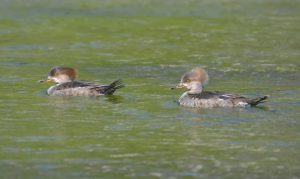
By Les Harrison
Wakulla County Extension Director
Air travel has its advantages, even today with all the hoops one must jump through to gain access to this mode of 21st century transportation. Given the distances to far flung destinations, it is in many cases the only realistic option.
Still there are challenges which try the patients of even the most experience traveler. The screenings, the searches, the carry-on luggage rules and the long lines of sometime impatient or rude, fellow travelers can be trying.
Worse is losing checked luggage, or getting separated from a traveling companion during the confusion of an air terminal. The unfamiliar location with the noise and bustling crowd only serve to compound the confusion.
While troublesome for people, the avian population of migratory birds takes the whole task in stride with barely a peep, chirp or quack. Much like to occupants of I-75, and the other super highways, heading north in spring is one more in a long series of self-imposed seasonal migrations.
One of Wakulla County’s winter residents is currently preparing for the long trip north by way of the eastern U.S. flyways. The hooded merganser females are still in residence, but the males left a few weeks back.
The hooded merganser (Lophodytes cucullatus) is a member of the duck family, with only a single species in its genus. While less than graceful or nimble on its webbed feet, it is a deft swimmer with its legs towards the back of its broad body.
The generic term duck covers many species in the Anatidae family of birds. Geese and swans are also member of this animal family, but not the coots, anhingas (water turkeys or snake birds) or other aquatic fowl commonly seen in the rivers, springs and ponds of north Florida.
The hooded merganser favors small lakes and ponds, especially those surrounded by trees. In winter it is also often found occupying ponds in coastal marshes and this species almost never forms large flocks.
The female hooded mergansers have a distinctive crest on its head. Their bills are slender and hooked with serrated edges to help them grip their prey and this trait sometime has them referred to as sawbills.
In Florida they are commonly found in coastal areas like Wakulla County, but have also become established on lakes and rivers further inland. Mergansers have excellent diving skills and frequently plunge to significant depths in search of food.
Primarily fish eaters, they will take the opportunity to vary their diet when chance provides an easy prospect. Aquatic insect, reptiles and all stages of amphibians are all on the menu, depending on availability.
These mergansers are equipped to handle a variety of climates and environments, ranging from Canada to the southern U.S. They are extremely tolerant of salt water and have compact plumage with heavy down suitable for the cold regions for the far north.
Hooded merganser form monogamous pairs for breeding. They remain together until the female has selected a nesting cavity and completed laying her clutch, and then she is left to care for the brood.
Luckily the hatchlings leave the nest in about 24 hours. They can swim and dive for food on their own, but remain with the hen for about two months before flying away.
One can only guess if the mama mergansers have any sense of the gains and losses which will occur over the course of the next few months.
To learn more about the aquatic birds in Wakulla County, visit the UF/IFAS Wakulla County website at https://blogs.ifas.ufl.edu/wakullaco or call 850-926-3931.
 0
0
